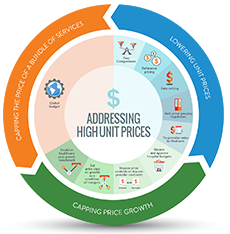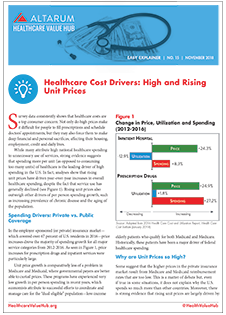Cost & Quality Problems
Focus on High Prices
Many attribute our high levels of health care spending to unnecessary utilization. However, the evidence is very strong that spending more per unit of health care (as opposed to consuming too many units of care) is the single most important reason that the U.S. spends far more on health care, per person, than other industrialized countries.
A detailed analysis of private payer claims data finds that for all major health care service categories, increases in prices drove spending growth. Another study of physician fees found that “higher fees, rather than factors such as higher practice costs, volume of services, or tuition expenses were the main drivers of higher U.S. spending, particularly in orthopedics.”
International comparisons reveal the same result. While estimates vary depending on the country of comparison and the exact procedure, on average we pay somewhere between one-third more to over twice as much for the same procedure or brand-name medication compared to other industrialized nations.
There is one important exception: the U.S. pays substantially less than other countries for generics. When combined with our overspending on brand name medicine, it is not clear that we pay an inordinate amount overall for medications as a proportion of total health care spending.
It is worth noting that, within the U.S., provider payment is determined in two very different ways. Within Medicare and Medicaid, unit prices are dictated through a formal process that incorporates input from stakeholders.
For private insurers, provider prices reflect the relative market power of the insurer and provider. Private-insurer contracts often tie provider payment to what Medicare pays using a multiple—for example, 160 percent of the Medicare rate for a service. But the negotiation process can result in very different multiples being used for different providers in the same geographic area.
High unit prices in the U.S appear to due to factors like consumer preference for broad provider networks, lack of price transparency and high market concentration among providers that allows them to charge prices substantially above costs.
Some suggest that the higher prices in private insurance are a result of Medicare and Medicaid reimbursement rates that are too low. This is a matter of debate, but even if true in some situations it does not explain why the U.S. spends so much more in aggregate than other countries.
Strategies to Address High and Rising Unit Costs:








